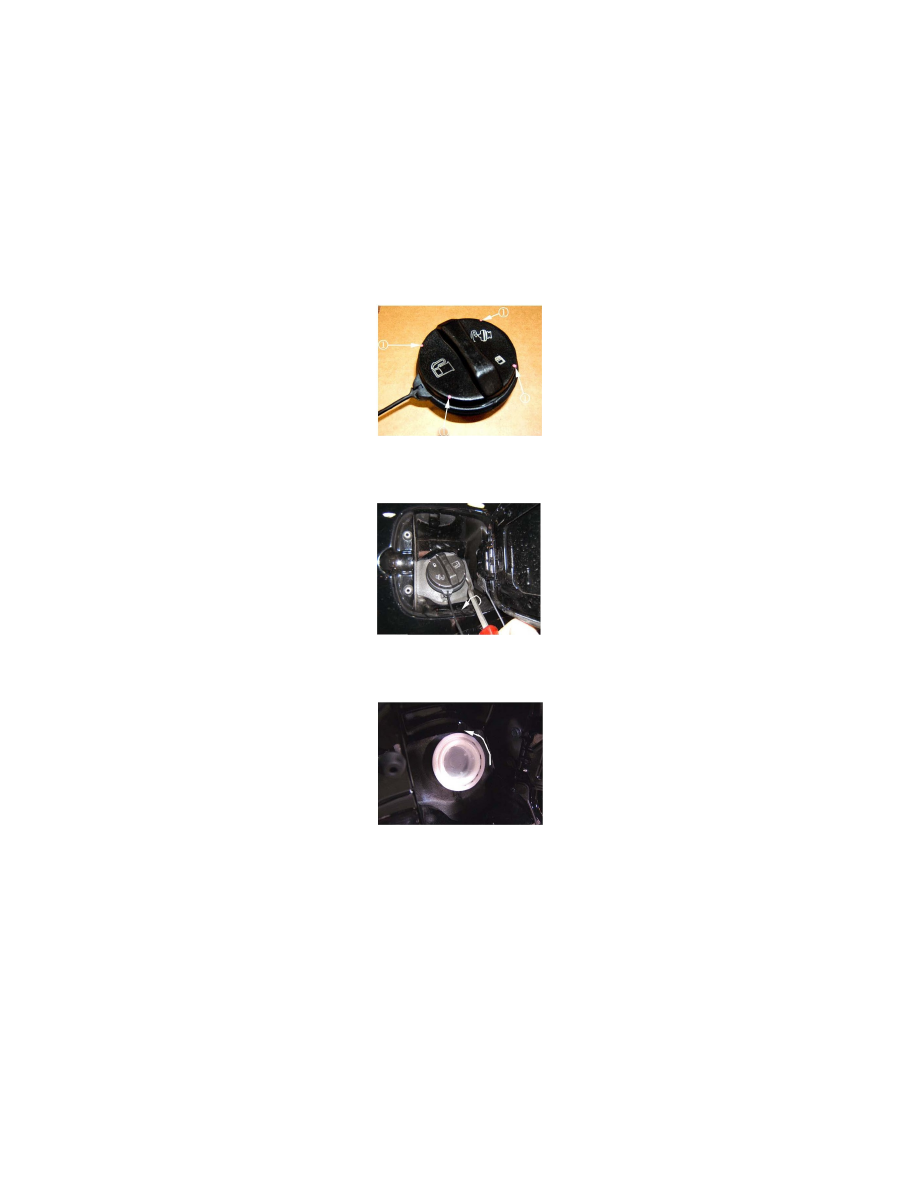Corvette V8-6.0L VIN U (2005)

be tightened or removed.
Notice:
The DTC diagnostic labor time for this Special Coverage covers evaporative code diagnosis related to defective fuel caps. Additional
diagnostic time related to other problems (purge valve, fuel tank, etc.) are not covered by this Special Coverage and is the responsibility of the
owner.
Important:
The illustrations shown in this service procedure are for demonstration purposes only.
Replacing Broken Fuel Cap
1.
Remove the fuel cap tether from the fuel filler pocket or fuel filler door.
2.
Remove the fuel cap from the fuel filler neck.
3.
If the fuel cap cannot be removed, remove the fuel cap ratcheting cover by releasing the four (4) tabs holding the cap cover to the lugged sealing
base.
4.
Position a radiator hose removal tool or similar type tool between the black cover and white inside body, and pry the cover over the retaining tab
by rotating the tool counter clockwise. Repeat, if necessary, at the 3 other locations around the cover.
5.
Remove the white fuel cap base from the filler pipe by rotating the fuel cap base counter clockwise.
6.
Install the new fuel filler cap and secure the tether to the fuel filler pocket or filler door.
DTC P0455 - (Evaporative Emission (EVAP) System Large Leak Detected)
Diagnostic Aids: P0455 diagnostics is checking for a large leak in the EVAP system. Examples of conditions that may contribute to this code
setting are: loose or broken fuel cap, disconnected or cracked EVAP lines, cracked charcoal canister, sticking purge or vent solenoids, inaccurate
fuel gauge, etc.
DTC P0442 - (Evaporative Emission (EVAP) System Small Leak Detected)
Diagnostic Aids: P0442 diagnostics is checking for a 0.5mm (0.020 in) sized hole in the EVAP system. Examples of conditions which may cause
this type leak could include: cracked EVAP lines, cracked charcoal canister, a cut or dirty fuel cap seal, debris on the purge or vent solenoid
internal seals, loose fuel lines, etc. Refer to Fuel Cap Inspection for P0442 below.
Fuel Cap Inspection for P0442.
